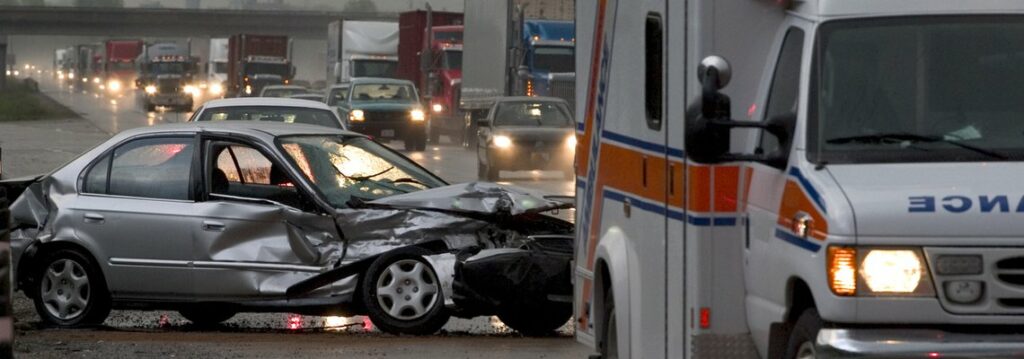Under California law, there are certain statutes and case law that are applied in determining who is at fault for an automobile accident involving multiple parties. Two of the more common accidents, rear-end collisions and left-turn crashes, often times involve rules of law and accident reconstruction that allow fault to be determined.
Rear-End Automobile Collisions
In a rear-end collision, the driver of the car striking the one ahead is generally found to be at fault. It is “presumed” under the law the driver of the rear vehicle was at fault, although this is a rebuttable presumption. The evidence necessary to overcome this presumption must be compelling and, ideally, objectively established. It is not likely going to be enough to overcome the presumption if the rear driver simply claims the car ahead stopped suddenly. Under California Vehicle Code Section 22350, “No person shall drive a vehicle upon a highway at a speed greater than is reasonable or prudent having due regard for weather, visibility, the traffic on, and the surface and width of, the highway, and in no event at a speed which endangers the safety of persons or property.” In the context of a rear-end accident, this rule requires every driver to leave enough space between their vehicle and the one ahead to stop suddenly for traffic.
If you have been in a rear-end car accident, it is best to take pictures at the scene, if this can be accomplished safely. Photographs of the damage to the involved vehicles as well as the existing traffic conditions go a long way to proving fault.
Left-Turn Car Crashes
When a left-turning vehicle and a straight traveling car collide in an intersection, the driver of the left-turning vehicle is most often found at fault. Under California law, “The driver of a vehicle intending to turn to the left or to complete a U-turn upon a highway, or to turn left into public or private property, or an alley, shall yield the right-of-way to all vehicles approaching from the opposite direction which are close enough to constitute a hazard at any time during the turning movement, and shall continue to yield the right-of-way to the approaching vehicles until the left turn or U-turn can be made with reasonable safety.” (California Vehicle Code Section 21801(a)). There are exceptions to the usual assignment of fault, but it generally must be shown the straight-traveling driver was speeding, inattentive or both. Also, in a left-turn case reconstruction of the accident becomes important as it can sometimes be shown that the straight-traveling driver had ample time to see, perceive and react to the left-turning vehicle. While this may diminish the fault of the left-turning driver, it rarely excuses them altogether.
Just like with a rear-end accident, obtaining photographic evidence of the position and damage to the vehicles at the scene (so long as those pictures can be taken safely) can prove critical to establishing fault.
Contact an Experienced OC Car Accident Attorney
If you or a loved one has been injured in an automobile accident, an experienced auto accident attorney can help you prove your case and get you the compensation you deserve. Mr. Ralph has 30 years of experience handling car accidents in the Orange County area. There is simply no substitute for experience when it comes to case analysis. Do what you can to protect your rights when you have been a victim in a car accident.

